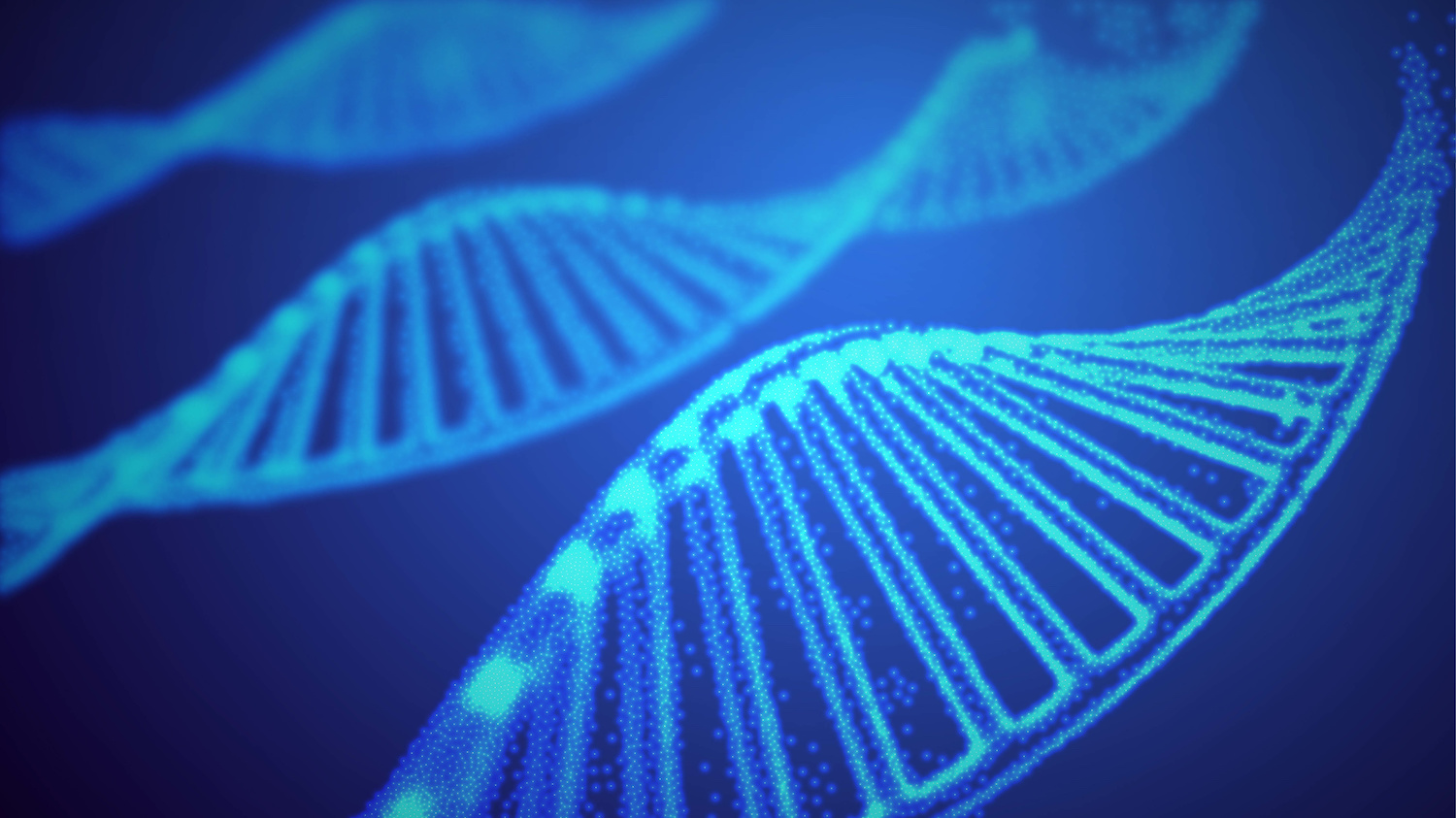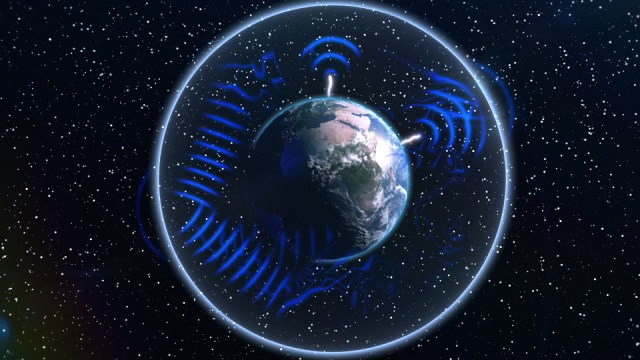Phage: The most abundant life form on Earth has a unique license to kill

- Viruses and bacteria are essential to life on Earth.
- Bacteriophages — aka "phages" — are viruses that kill bacteria.
- For as long as bacteria have existed, phages have been perfecting the art of destroying them.
Bacteriophages, known simply as “phages” for short, are viruses that infect and kill bacteria. Essentially harmless to humans, they exist solely to inject their genes into bacterial cells, where they can either lurk indefinitely or replicate madly. In the latter case, they cause their unfortunate host’s metabolism to go haywire, churning out copies of the virus instead of the materials it needs to sustain itself. When the time is right, the new viruses burst the bacteria open like a popped water bomb and spill out to find new hosts in which to repeat the process.
The vast majority of these viruses are so-called “tailed” phages. Along with a sinister-looking 20-faced head, known as a capsid, these viruses have a distinctive protein tube, or tail, which they use to inject their DNA into their unfortunate host like a tiny syringe. Even finer, spider-like legs fold out from the base of the phage to help it detect and bind to the surface of the bacterial cell, like an unfathomably tiny lunar lander.
Confusingly, bacteria and viruses are often grouped together simply as “germs,” but they are distinct in important ways. The most basic difference between them is that bacteria are cells and viruses are not. Cells are biology’s basic units of life — microscopic capsules with everything needed for life and replication contained within a fat-based membrane and, sometimes, a tough outer wall. All life on the planet — except viruses — consists of cells, either working in concert with one another (like the human body, for example, a network of trillions of related cells arranged to form tissues and organs) or existing just fine as single cells.
Viruses, conversely, are far less complex. At their simplest, they are little more than a length of genetic material (normally DNA, deoxyribonucleic acid, but sometimes its chemical cousin, RNA, ribonucleic acid) wrapped in a protective protein capsule. Outside of a host, they are inert, lifeless even, lacking the biochemical components to do anything with the information contained in their genes.
In order to replicate, the virus must get inside a cell. Viruses have been described as living “a kind of borrowed life,” only ever able to exert an influence on the world when inside a host cell. It’s a little like how a computer virus is just a piece of code on a USB stick — unable to do anything when lying in a drawer — until it is placed into a computer, when it can suddenly instruct that computer’s systems to send copies of itself to a thousand inboxes around the world. This reliance on other life is, in part, why there has always been a debate over whether viruses are “alive” or not. To me, the question is unhelpful, suggesting that viruses are somehow not a proper, paid-up member of our wonderful living world.
Whether or not viruses meet the criteria we have decided characterizes a distinct living being, they are an essential biological component of the ecosystems that have developed on Earth. They are built from the same basic building blocks as life, use the same chemical language as life, evolve and replicate alongside life, and interact with and transform life. Some scientists believe that all life may have evolved from self-replicating entities more akin to viruses than cells. And by operating in the fascinating and illuminating grey area where complex chemistry becomes simple biology, they can arguably tell us more about what life is than living creatures so complex that they may never be fully understood.
For every type of cellular life on earth — bacterial, fungal, animal or plant, and the weird things somewhere in between — there are viruses that have evolved to infect them, and together these viruses outnumber all other living entities on Earth. While we commonly associate viruses with disease and death, just a tiny fraction are a danger to us. The vast majority are phages. And it is only very recently that we have begun to understand that phages are an essential part of the living fabric of the planet, drivers of innovation, diversification and change.
Bacteria are also essential to all life on Earth. Although we have “learnt to hate and fear them,” as the science writer Ed Yong puts it, just a hundred or so of the many thousands of species of bacteria in the world colonize our body in a way that makes us ill or causes disease. Even these mostly live quite happily on and around us without our noticing, only causing ill health when a vulnerability in our immune systems is exposed. The rest perform a suite of essential environmental services that make our planet hospitable. They capture chemical and solar energy to form the foundational layer of the food chains that support the rest of life on Earth; they take inorganic material, waste products, and dead things and recycle them back into forms that can be used by other life. They produce 20% of the atmospheric oxygen we breathe. They help us digest our food, help plants absorb nutrients, protect us from other microbes, and ferment some of our favorite foods. They have adapted and co-evolved to live in almost every environmental niche on the planet, from boiling vents at the bottom of the sea to the internal organs and tissues of other life, from lakes with the acidity of battery acid to the nodules in the roots of our most important crops.
They, and other similar single-celled life that together are known as prokaryotes, have been growing and multiplying on Earth ceaselessly for almost four billion years, since life first emerged on our scorching, primordial rock. Among the most ancient forms of life on the planet, they have evolved into thousands, probably millions of different species, exploiting and colonizing virtually every environment possible. They are literally everywhere. Just on the sponge in your kitchen sink, there are probably more bacteria than the total number of humans who have ever lived.
The biologist J.B.S. Haldane famously quipped that if God created all the living organisms on Earth, then the creator must have “an inordinate fondness for beetles”: it seems God is even fonder of bacterial viruses.
For as long as all this bacteria has been around, however, phages have been perfecting the art of infecting and destroying them. For every single one of the immense number of bacterial cells on the planet, there are thought to be at least ten phages — perhaps more. Anywhere and everywhere a bacterial strain has evolved to exploit an ecological niche, there will be viruses that have evolved to exploit that bacteria. This makes these seemingly obscure viruses easily the most abundant biological entity on Earth.
Sail out into the middle of the ocean and scoop up a cup of water and it will contain millions, possibly hundreds of millions of phages. Take some water from a briny marsh or your local stream, a caustic alkaline lake, or a scorching hydrothermal vent and still you’ll find millions of phages in every milliliter. On land, there can be even higher concentrations — billions of phages in a single gram of rich soil. Even a gram of baked desert earth or frozen Arctic peat contains an active community of millions of phages, locked in a never-ending dance with their bacterial hosts.
There are so many phages on this planet that they can even be found floating in thin air. When one group of researchers installed collection devices on a concrete platform almost 3 km above sea level in the Sierra Nevada mountains in Spain, they found that hundreds of millions and sometimes billions of viruses rained down onto their equipment every day. Researchers estimate there may be as many as 1031 phages on Earth — that’s 10 with 30 zeros after it — a truly preposterous number that equates to around a trillion phages for every grain of sand on the planet. The biologist J.B.S. Haldane famously quipped that if God created all the living organisms on Earth, then the creator must have “an inordinate fondness for beetles”: it seems God is even fonder of bacterial viruses.





